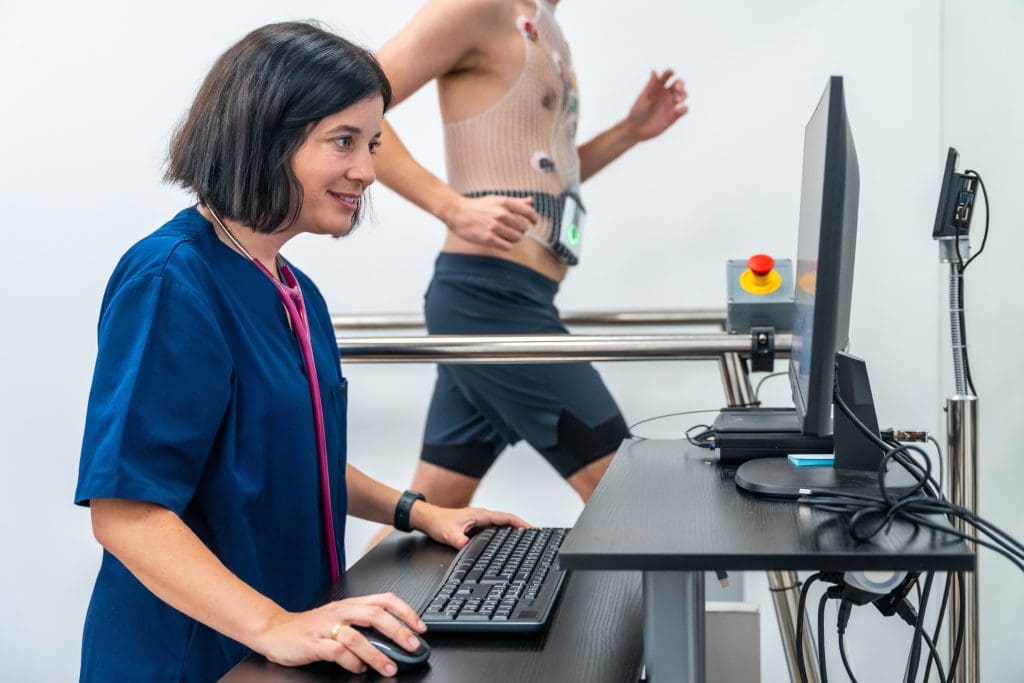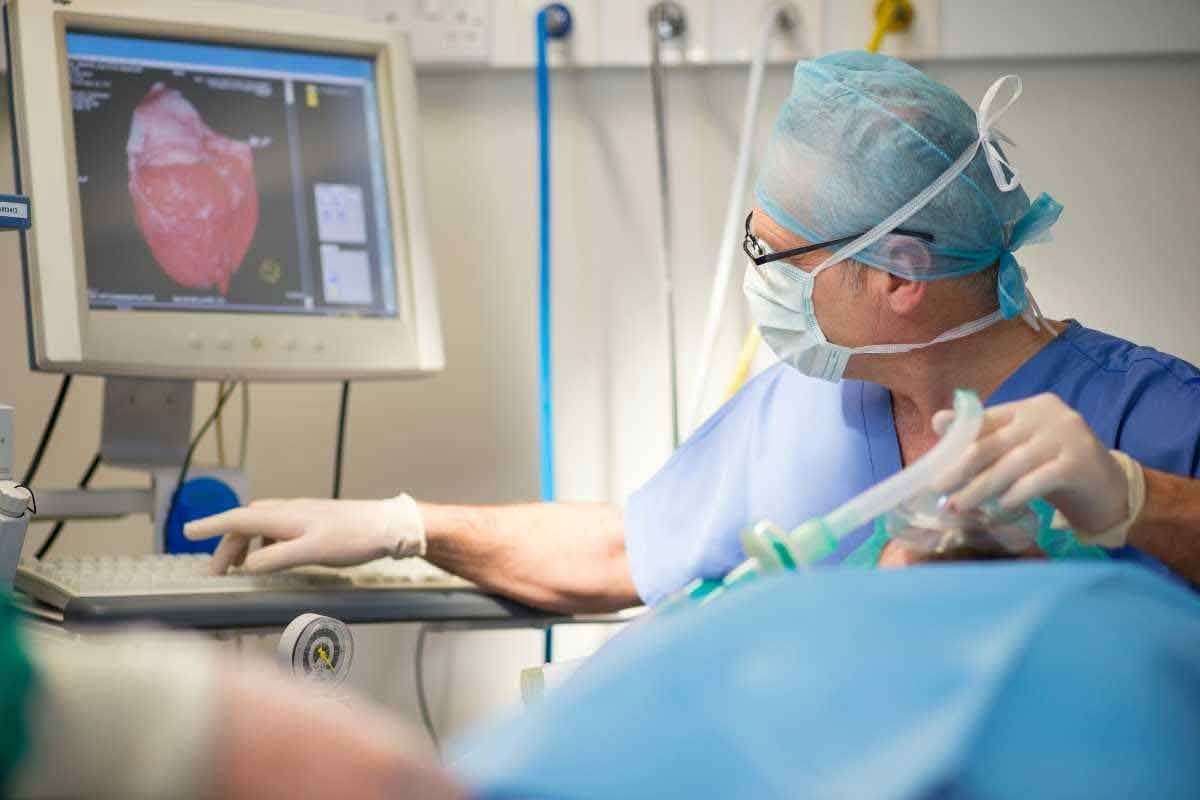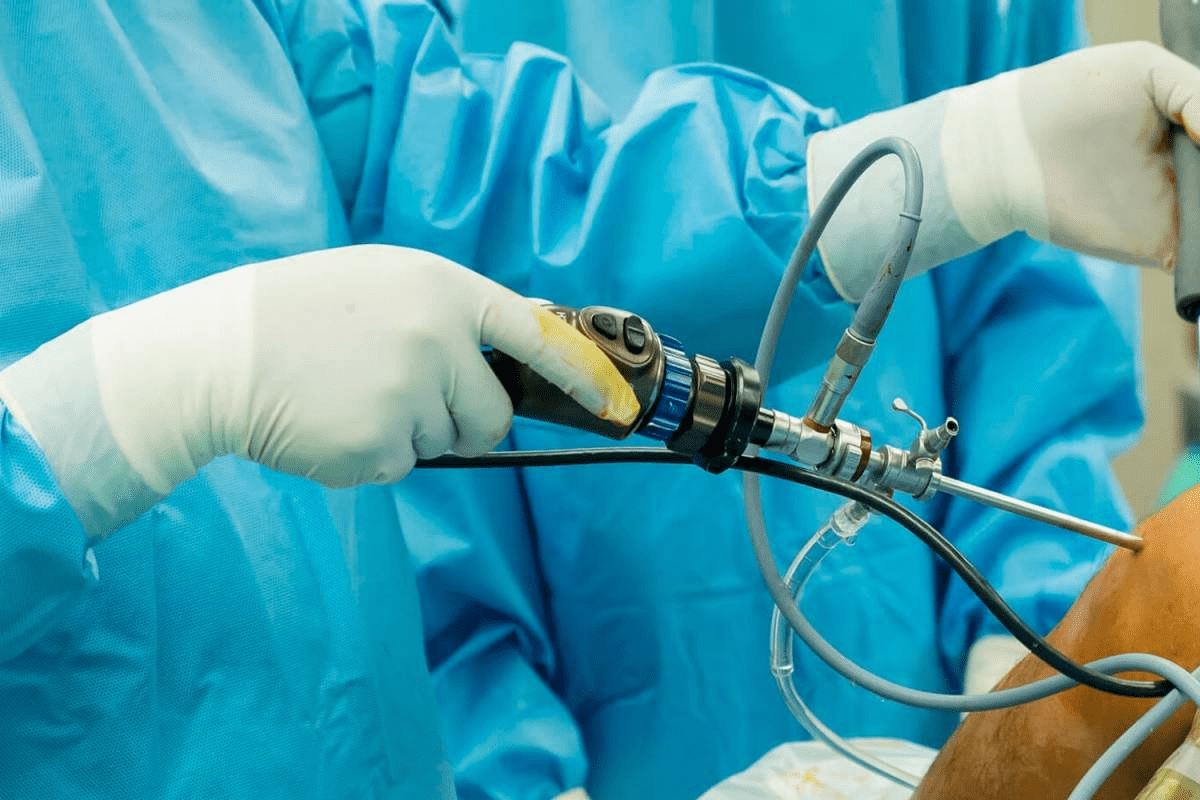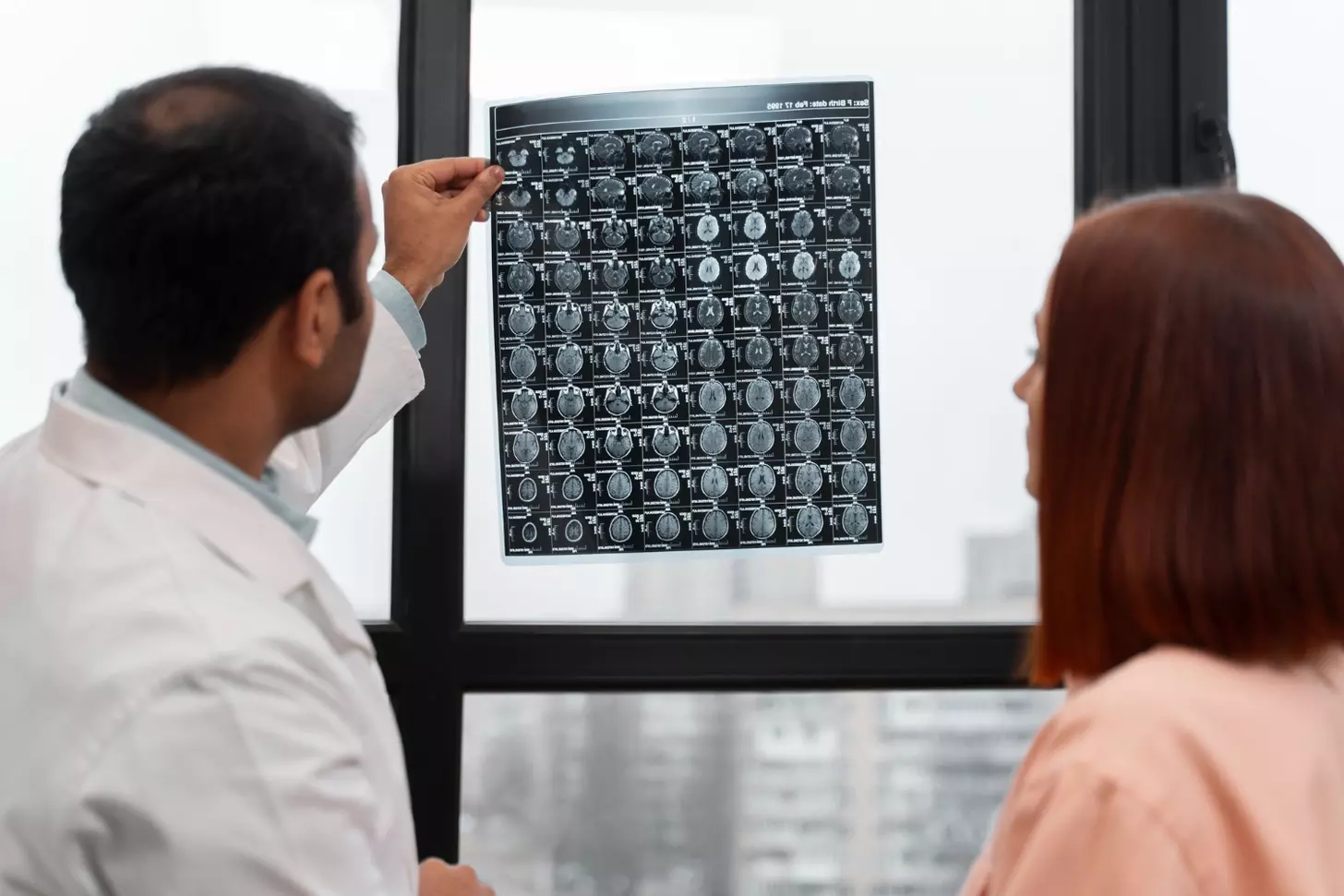Last Updated on November 27, 2025 by Bilal Hasdemir
Heart disease is a big problem in the U.S., causing many deaths. It’s shocking that almost 1 in 5 adults has heart disease. Doctors use stress tests and nuclear stress tests to find and treat heart problems. Many patients ask, “What is the difference between a stress test and a nuclear stress test? since both sound similar but serve slightly different purposes.
A stress test checks how well the heart works when it’s stressed, usually through exercise or medicine. A nuclear stress test, or nuc med, uses a tiny bit of radioactive material to see how blood flows through the heart.
It’s important for both patients and doctors to know the difference between these tests. This article will explain each test, why they’re used, and how they help diagnose heart issues.
Key Takeaways
- Stress tests evaluate heart function under physical stress.
- Nuclear stress tests visualize heart blood flow using radioactive material.
- Both tests are key for diagnosing and managing heart conditions.
- The choice between tests depends on individual patient needs.
- Understanding the differences is key to informed healthcare decisions.
Understanding Cardiac Stress Testing

Cardiac stress testing is key for spotting and treating heart disease. These tests help doctors see how well the heart works under stress. This stress can come from exercise or medicine.
The Purpose of Cardiac Diagnostic Testing
Cardiac diagnostic testing checks the heart’s health. Cardiac stress tests see how the heart handles stress. This stress is usually from exercise or medicine.
These tests find heart problems, check heart attack risk, and see if treatments work. They help doctors understand how the heart reacts to stress. This helps them make better care plans for patients.
How Stress Tests Evaluate Heart Function
Stress tests look at heart function by watching heart rate, blood pressure, and ECG during stress. This can be from exercise or medicine.
- Monitoring heart rate and blood pressure responses to stress.
- Assessing ECG changes indicative of ischemia or arrhythmias.
- Evaluating symptoms such as chest pain or shortness of breath during stress.
Doctors use these details to learn about the heart’s health. They can spot problems that need more attention or treatment.
The Basic Stress Test Explained
A stress test checks how well the heart works under stress. It’s key for spotting heart issues and checking the heart’s health.
Exercise Stress Test Methodology
An exercise stress test is the most common type. It involves walking on a treadmill or biking to stress the heart. The exercise gets harder to reach a target heart rate.
While exercising, the heart rate, blood pressure, and ECG are watched. This test shows how the heart handles stress. It helps find problems like coronary artery disease.
This test is good because it’s not invasive and shows results right away. But, some people can’t exercise because of health issues.
Pharmacological Stress Test Alternatives
For those who can’t exercise, a pharmacological stress test is an option. It uses medicine to stress the heart, like exercise does. The patient’s heart rate and ECG are monitored.
This test is great for people who can’t move well or can’t exercise. It’s as good as an exercise test for finding heart problems.
Nuclear Stress Test: Adding Imaging to the Equation
Nuclear stress testing is a big step forward in heart health checks. It gives detailed pictures of the heart when it’s under stress. This is great for those who need a closer look at their heart.
What Makes a Stress Test “Nuclear”
A stress test is called “nuclear” if it uses tiny amounts of radioactive tracers. These tracers are put into the blood. They help make clear pictures of the heart’s shape and how it works.
These tracers help doctors see how blood flows to the heart muscle. They can spot damaged or dead heart areas. They also help find coronary artery disease.
Radioactive Tracers and Their Function
Radioactive tracers, or radiopharmaceuticals, are special substances that glow. They are seen by cameras to make heart images. Technetium-99m and thallium-201 are the most used in nuclear stress tests.
These tracers build up in the heart muscle based on blood flow. If a spot doesn’t take up much tracer, it might mean blood flow or heart tissue issues.
| Tracer | Characteristics | Use in Nuclear Stress Testing |
| Technetium-99m | Short half-life, low radiation dose | Commonly used for myocardial perfusion imaging |
| Thallium-201 | Longer half-life, higher radiation dose | Used for assessing myocardial viability and perfusion |
The right tracer depends on the patient’s health, what info is needed, and the tools available.
Key Differences Between Standard and Nuclear Stress Tests
Standard stress tests and nuclear stress tests are used to check heart health. They differ in how they work and what they show. Standard tests look at heart rate and blood pressure during exercise. Nuclear tests use special images to see the heart’s inner workings.
Diagnostic Capabilities Comparison
A standard stress test checks heart function during exercise. It looks at heart rate, blood pressure, and ECG readings. In contrast, a nuclear stress test uses tiny amounts of radioactive tracers to see the heart’s structure and function.
Nuclear stress tests give clearer images of the heart. They can spot problems like coronary artery disease and heart attacks. This is great for people with heart disease or unclear test results.
Accuracy and Sensitivity Differences
Standard stress tests work well for most people with moderate risk. But they might miss small blockages or issues in some cases. Nuclear stress tests, with their advanced imaging, are more accurate and sensitive.
A study in a Journal found nuclear tests are very useful. They help diagnose and predict heart disease better than standard tests.
“The use of nuclear cardiology techniques has significantly improved the diagnosis and management of coronary artery disease.”
The Science Behind Nuclear Medicine in Cardiac Testing
Nuclear medicine has changed cardiology, giving us detailed views of the heart. It uses radioactive tracers to show the heart’s inner workings. This helps doctors diagnose and treat heart problems better.
How Radioactive Tracers Work in the Body
Radioactive tracers are substances that give off radiation. They can be seen by special imaging tools. When in the body, they go to the heart, showing its function and structure.
Doctors inject a small amount of the tracer into the blood. As it moves, it sends out gamma rays. A gamma camera catches these rays, making images of the heart.
Key benefits of using radioactive tracers include:
- Enhanced diagnostic accuracy
- Ability to assess heart function under stress
- Detailed visualization of cardiac structure
Types of Nuclear Imaging Technologies Used
Nuclear cardiac imaging uses several technologies. The main ones are Single Photon Emission Computed Tomography (SPECT) and Positron Emission Tomography (PET).
SPECT imaging is great for cardiac stress tests. It uses a gamma camera to make 3D images of the heart. SPECT shows how well the heart is working and if it’s alive.
PET imaging gives high-resolution images. It’s best for checking the heart’s metabolism and blood flow. PET scans help diagnose and manage heart disease.
- SPECT: Ideal for assessing myocardial perfusion
- PET: Offers high-resolution images and metabolic assessment
Knowing how radioactive tracers work and the imaging technologies helps doctors choose the right tests. This leads to better care for patients.
Side Effects of Nuclear Medicine in Stress Testing
It’s important for patients and doctors to know about the side effects of nuclear medicine in stress tests. These tests use radioactive tracers, which can make people worry about safety and health risks.
Common Immediate Reactions to Radioactive Tracers
Most people do okay with nuclear stress tests. But, some might feel dizzy, nauseous, or have headaches right away. They might also have allergic reactions to the tracer.
These issues are usually mild and go away quickly. But, it’s key to tell your doctor if you feel anything strange during or after the test.
Long-term Considerations and Radiation Exposure
One big worry is the radiation from these tests. Even though the dose is small, there’s talk about long-term risks. These could include a higher chance of cancer or genetic changes.
But, the benefits of these tests are often big, like finding heart problems early. Doctors think about these risks and benefits when they decide to do these tests.
Managing Possible Side Effects
To lessen side effects and handle them if they happen, patients can do a few things:
- Listen to and follow the pre-test instructions carefully.
- Tell your doctor about any allergies or health issues.
- Drink plenty of water to help get rid of the tracer.
After the test, follow any instructions from your doctor. This might include tips on how to reduce radiation exposure for others.
Knowing about the side effects of nuclear medicine in stress tests and how to handle them helps patients feel more confident when they get these tests.
Preparing for a Standard Stress Test
Getting ready for a standard stress test? Knowing the pre-test rules and the testing steps can really help. It makes your experience better.
Pre-test Instructions and Restrictions
Before your standard stress test, follow some key instructions. It’s very important to follow these guidelines to get accurate results.
- Avoid eating or drinking anything except water for at least four hours before the test.
- Wear comfortable clothing and shoes suitable for exercise.
- Inform your doctor about any medications you’re taking, as some may need to be adjusted or avoided before the test.
- Remove any jewelry or other items that could interfere with the test equipment.
You might also need to stop using substances like caffeine and tobacco before the test. They can change your heart rate and test results.
What to Expect During the Procedure
During the test, you’ll walk on a treadmill or ride a stationary bike. The test is watched closely by healthcare professionals to keep you safe.
| Test Phase | What to Expect |
| Pre-test | You’ll be prepared for the test with electrodes placed on your chest to monitor your heart activity. |
| Exercise | You’ll exercise on a treadmill or bike, with the intensity gradually increasing. |
| Post-test | You’ll rest, and your heart activity will continue to be monitored. |
Knowing what to expect can help lower your anxiety. It makes sure the test goes smoothly.
Preparing for a Nuclear Stress Test
To get the best results, it’s key to prepare well for a nuclear stress test. This test uses small amounts of radioactive material to see the heart. It’s not just about exercising or feeling stressed.
Special Considerations for Nuclear Testing
There are important things to think about before a nuclear stress test. Tell your doctor about any medicines you’re taking. Some might need to stop before the test. You’ll also be told to avoid caffeine and certain foods for a while.
Caffeine can mess with the test results. So, it’s important to follow the instructions closely. Your doctor might give you special advice based on your health history.
“Patients should discuss their medication regimen and any concerns with their healthcare provider before the test.”
– American Heart Association
Duration and Testing Phases
A nuclear stress test has two parts: the stress and rest phases. In the stress phase, you’ll walk on a treadmill or bike to work your heart. If you can’t exercise, medicine might be used instead.
The whole process, from start to finish, can take a few hours. Plan to spend the whole day when you book your test.
Post-Test Care and Precautions
After your stress test or nuclear stress test, it’s important to follow the post-test care guidelines. This helps you recover well and addresses any concerns you might have.
Recovery After a Standard Stress Test
After a standard stress test, you can usually go back to your normal activities unless your doctor says not to. You might feel tired, so resting for a few hours is a good idea. Keep an eye on how your body feels and tell your doctor if anything seems off.
Radiation Safety After Nuclear Testing
If you had a nuclear stress test, the radioactive tracer will leave your body through urine and feces. Drinking lots of water can help get rid of it faster. Your doctor will tell you how to care for yourself after the test and what to do to avoid exposing others to radiation.
When to Contact Your Doctor
Knowing when to call your doctor after a stress test is key. Call your doctor if you have chest pain, severe shortness of breath, dizziness, or any other symptoms that worry you. Also, if you have questions about your test results or what to do next, don’t hesitate to ask your healthcare provider.
By following these steps and your doctor’s advice, you can recover well and understand your test results better.
When Doctors Recommend a Standard vs. Nuclear Stress Test
Doctors choose between a standard stress test and a nuclear stress test based on the patient’s condition. They look at several factors to decide which test is best.
Medical Conditions That Warrant Nuclear Imaging
Nuclear imaging is often needed for patients with serious heart issues. Severe coronary artery disease or a history of heart attack might require a nuclear stress test. This is because it shows detailed images of the heart’s blood flow.
People with diabetes or high blood pressure also might need nuclear imaging. This is because they are at higher risk for heart disease. The detailed info from nuclear stress tests helps doctors create better treatment plans.
When a Basic Stress Test Is Sufficient
A basic stress test is enough for those at lower risk or with milder heart conditions. It checks heart function and gives important info without needing nuclear imaging.
Younger patients with fewer risk factors might not need a nuclear stress test. A standard stress test is simpler and less invasive for them.
Practical Considerations: Cost, Insurance, and Accessibility
Choosing between a standard stress test and a nuclear stress test involves more than just health benefits. Cost, insurance, and how easy it is to get to the test site are also key factors.
Comparing Costs Between Test Types
The price of a stress test can change a lot, depending on the type. Nuclear stress tests are usually pricier because they use a radioactive tracer and special imaging tech. A study in a Journal found that nuclear stress tests can cost between $1,000 and $3,000. On the other hand, standard stress tests might cost between $200 and $500.
“The cost difference between standard and nuclear stress tests is big,” says a cardiologist. “It’s important for patients to know these costs.”
Insurance Coverage for Cardiac Diagnostic Tests
Insurance coverage is a big deal for stress test costs. Most insurance plans cover both standard and nuclear stress tests if they’re needed for medical reasons. But, how much they cover can really vary.
- Check your insurance policy to understand what is covered.
- Pre-authorization may be required for nuclear stress tests.
- Some insurance plans may have different copays for different types of tests.
Finding Qualified Testing Facilities
Finding a good place to get tested is also important. Look for facilities that are accredited by groups like the American College of Radiology or the Intersocietal Accreditation Commission. Accreditation means the facility meets high quality and safety standards.
When looking for a testing site, think about location, how easy it is to get an appointment, and the staff’s expertise. Many hospitals and diagnostic centers have online tools to help you find and compare places.
Advancements in Nuclear Cardiac Imaging
The field of heart diagnostics is changing fast thanks to new nuclear imaging tech. These updates make diagnoses more accurate and safer for patients by cutting down on radiation.
Modern Technologies Reducing Radiation Exposure
New tech in nuclear heart imaging has made big strides in lowering radiation risks. For example, better software and hardware in SPECT systems use less radioactive tracers but keep image quality high.
Some major advancements include:
- High-sensitivity collimators that capture images with less radioactive material.
- Advanced reconstruction algorithms that make images clearer from scans with lower doses.
- Hybrid imaging systems that mix nuclear medicine with CT or MRI for better diagnostics.
Future Directions in Cardiac Diagnostic Testing
The future of nuclear heart imaging looks bright, with many new trends and tech on the horizon. These changes will likely make cardiac diagnostics even better.
Some exciting future directions include:
- The use of artificial intelligence to enhance image analysis and accuracy.
- Creating new tracers that are safer and more specific.
- Adopting personalized medicine to tailor care to each patient’s needs.
These advancements show how fast and exciting nuclear heart imaging is. They promise to keep improving patient care in the future.
Conclusion: Making an Informed Decision About Cardiac Testing
It’s important to know the difference between a standard stress test and a nuclear stress test. Both check how well your heart works. But they do it in different ways and have different levels of detail.
A standard stress test is easy and doesn’t cost much. It checks your heart while you’re active. On the other hand, a nuclear stress test uses special tracers to show more about your heart. This makes it better at finding problems.
When choosing a test, think about your health and past medical issues. Your doctor might suggest a nuclear stress test if your situation is complex or if the standard test doesn’t give clear results.
Knowing the main differences helps you choose the right test for you. Talk to your doctor to find out which test is best for your health needs.
FAQ
What is nuclear medicine used for?
Nuclear medicine helps diagnose and treat many health issues. This includes cancer, heart disease, and some neurological problems. It uses small amounts of radioactive materials to see how organs work.
How does nuclear medicine work?
It uses a tiny amount of radioactive material, called a tracer. This material goes to the area being studied. Then, cameras detect the radiation to make detailed images of the body’s inner workings.
What are the side effects of nuclear medicine?
Side effects are usually mild and short-lived. Some might have an allergic reaction or worry about radiation. But, the benefits usually outweigh the risks, and radiation exposure is low.
How long are you radioactive after a nuclear stress test?
The tracer from a stress test leaves the body in a few hours to days. This time varies based on the tracer and individual factors like kidney health.
What precautions should be taken after a nuclear scan?
Drink lots of water to clear the tracer. Some places might tell you to avoid close contact with pregnant women and kids for a bit.
What is the difference between a stress test and a nuclear stress test?
A stress test checks heart function during activity or with medicine. A nuclear stress test adds imaging with radioactive tracers to see blood flow and function.
Is nuclear medicine safe?
Yes, nuclear medicine is safe when done right by a skilled doctor. The benefits are often greater than the risks, and radiation exposure is low.
What are the benefits of nuclear medicine?
It gives important info for diagnosing and managing health issues. It helps doctors make treatment plans and check if treatments are working.
How does a nuclear stress test work?
A nuclear stress test injects a tracer into the heart. The tracer shows up on a camera, creating images of the heart’s blood flow under stress and at rest.
What are the risks of nuclear medicine?
Risks include radiation, allergic reactions, and incorrect results. But, these risks are small, and the benefits of nuclear medicine are usually greater.





